In Harlem, murals are calling attention to the discrimination against the Baha’i faith in Iran
As a reporter working in Iran, Maziar Bahari was bothered not to hear more people speak about the discrimination faced by the Baha’i, a persecuted religious minority. But he knew that if he wrote about their lives, it would mean the end of his ability to work in the country.


As a reporter working in Iran, Maziar Bahari was bothered not to hear more people speak about the discrimination faced by the Baha’i, a persecuted religious minority. But he knew that if he wrote about their lives, it would mean the end of his ability to work in the country.
“I was always aware that I could not work on the Baha’i issue because that would be the last time I was working in Iran,” said the Canadian-Iranian Bahari, who was then reporting for Newsweek. “I had this guilt that I was not working on it.”
In 2009, Bahari was arrested and served 118 days in Evin Prison after reporting on Iran’s contested 2009 election. During his incarceration he was beaten by an intelligence officer in the Revolutionary Guards. His story became the subject of Jon Stewart’s 2014 film Rosewater.
When he was released and knew that he could not return to the country, Bahari decided he wanted to do something about the discrimination he saw in Iran.
In 2015, Bahari founded the Not a Crime campaign, using street art to call attention to the oppression of the Baha’i community. This year, Not a Crime commissioned artists to create a series of murals in Harlem, selected for its deep connection to the US civil rights movement, with the hopes of starting a new a conversation about discrimination. The murals have been curated by Street Art Anarchy, a New York-based firm that works with street artists from around the world to commission contemporary art projects.
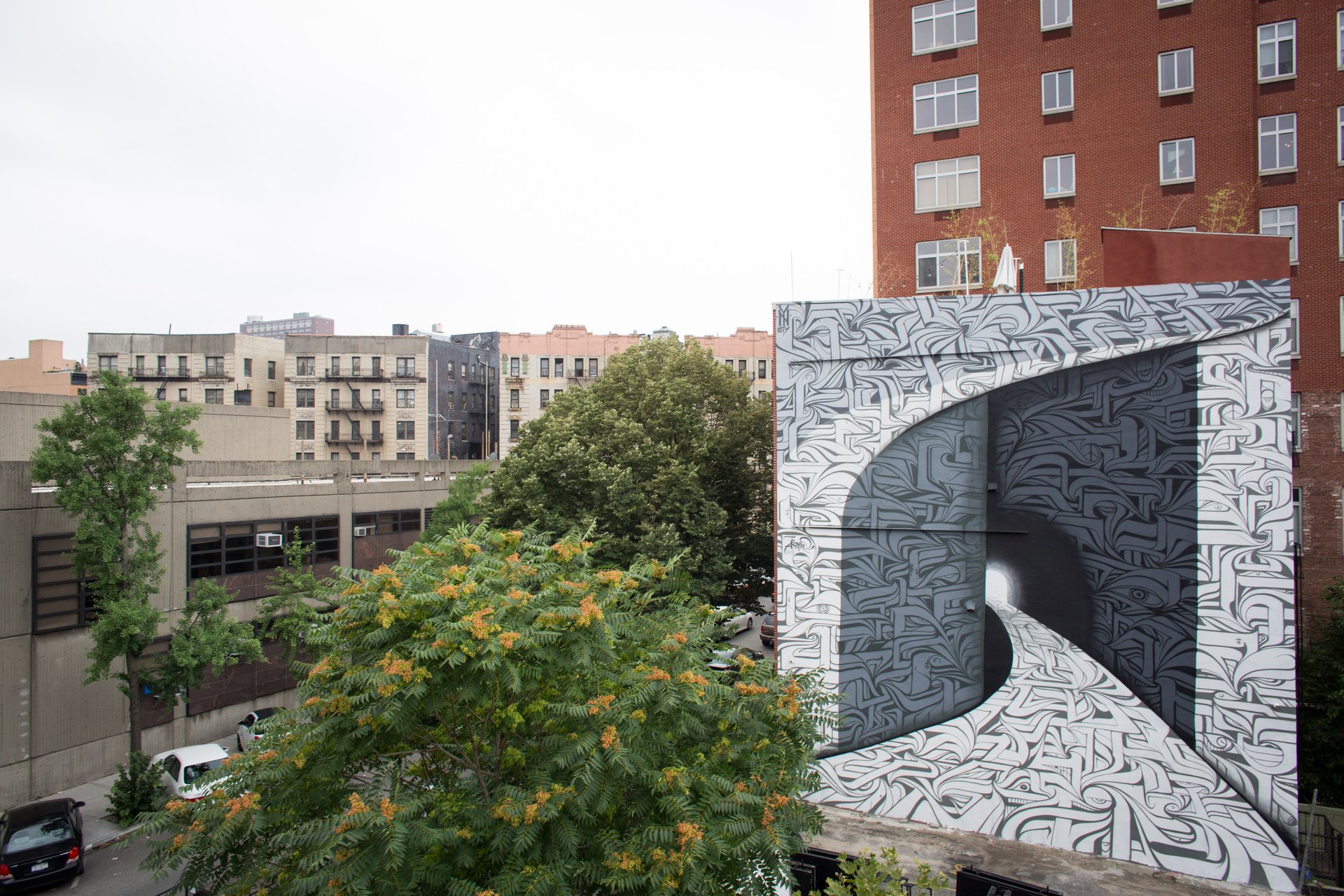
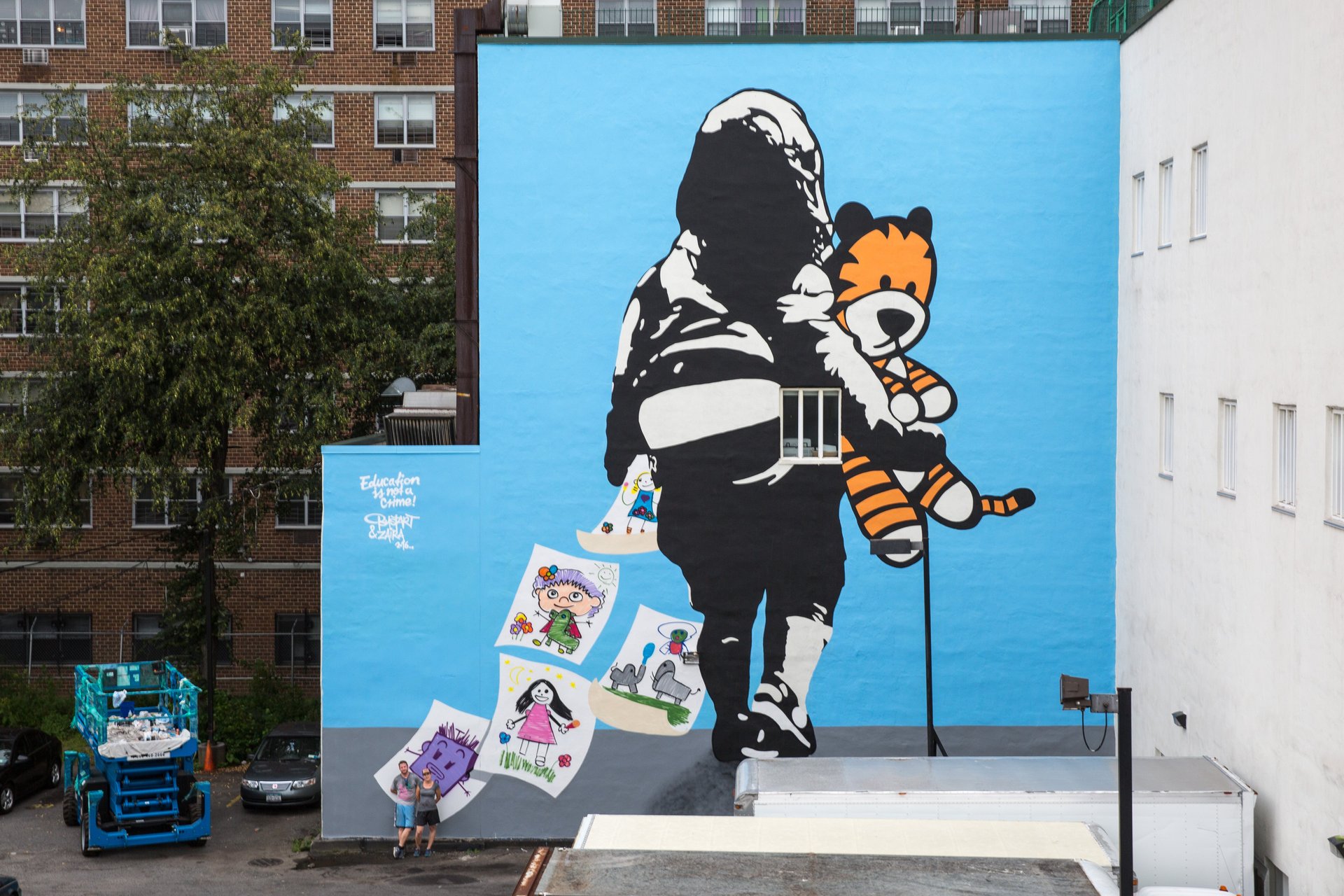
Other murals commissioned by the campaign since its founding have sprung up across the globe, in cities including Cape Town, Johannesburg, Rio De Janeiro, London, Delhi, Atlanta, and Sydney. The campaign uses a combination of public art and digital technology to spur conversations, both on the streets and on the Internet, through pictures and videos of the artists at work.
“The artist while creating the piece of work has a conversation with passersby, and everything that is happening during the creative process is captured by video camera,” said Bahari. “Those videos, the digital works of arts, give context to murals, the analog works of art. As a result we have a multi-layered dialogue with the community.”
The roughly 300,000 Baha’i who live in Iran are viewed as heretics and have been discriminated against since the 1979 Islamic Revolution. In the aftermath of the revolution, hundreds of Baha’i were arrested or murdered. Members of the community had their property and belongings seized by various Iranian institutions in the following decades.
The discrimination continues—even today, Baha’is are the target of harassment and arrests on false pretenses. The campaign estimates that there are 74 Baha’is currently incarcerated in Iran.
Members of the Baha’i community, considered impure by country’s powerful clerics, also are banned from studying or teaching in universities in the country. “They wanted to stop the growth of the Baha’i community,” said Bahari, who describes the government’s policy as “educational apartheid.”
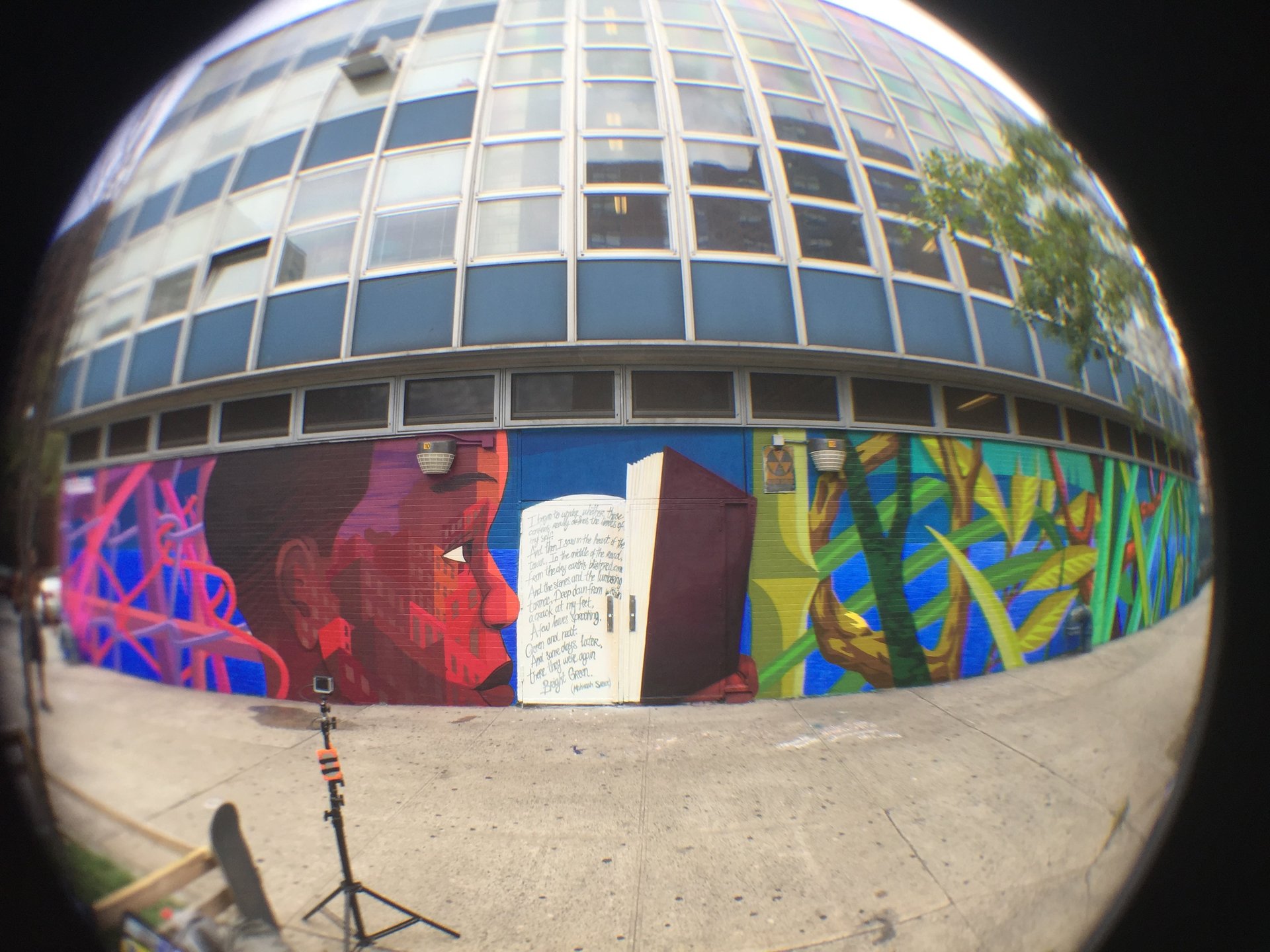
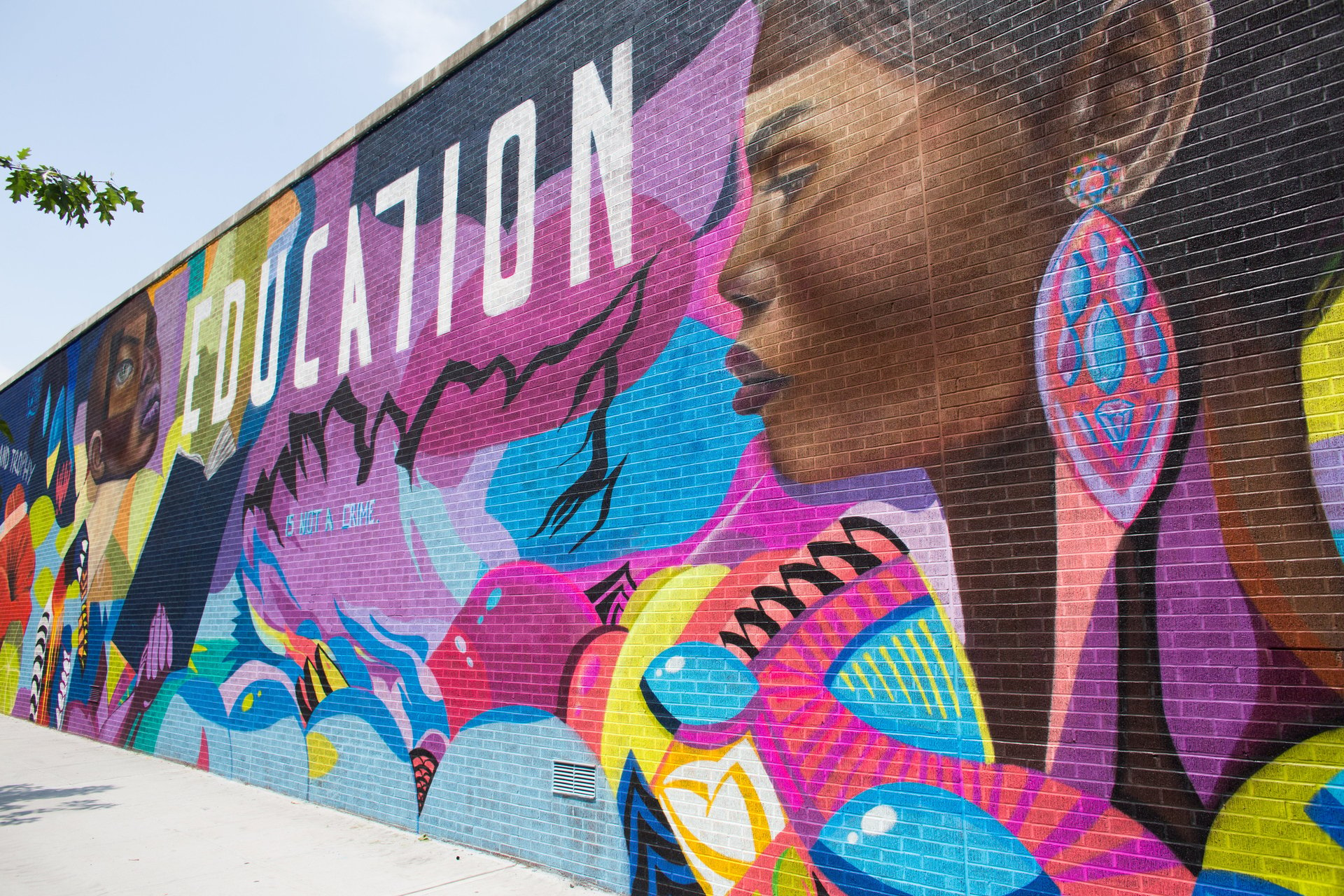
The Baha’i community has responded to this maltreatment in an innovative way. In 1986, after many Baha’i teachers were kicked out of university and Baha’i students were denied education, they started an underground university called the Baha’i Institute for Higher Education (BIHE). “Through that underground university they have managed to not only survive in Iran, but they have thrived,” says Bahari.
The lack of accreditation for the university means that the degree is not accepted in most places in Iran. But many prominent universities in the US, such as MIT, Stanford University, and the University of California, Berkeley, accept these unofficial degrees and admit BIHE graduates.
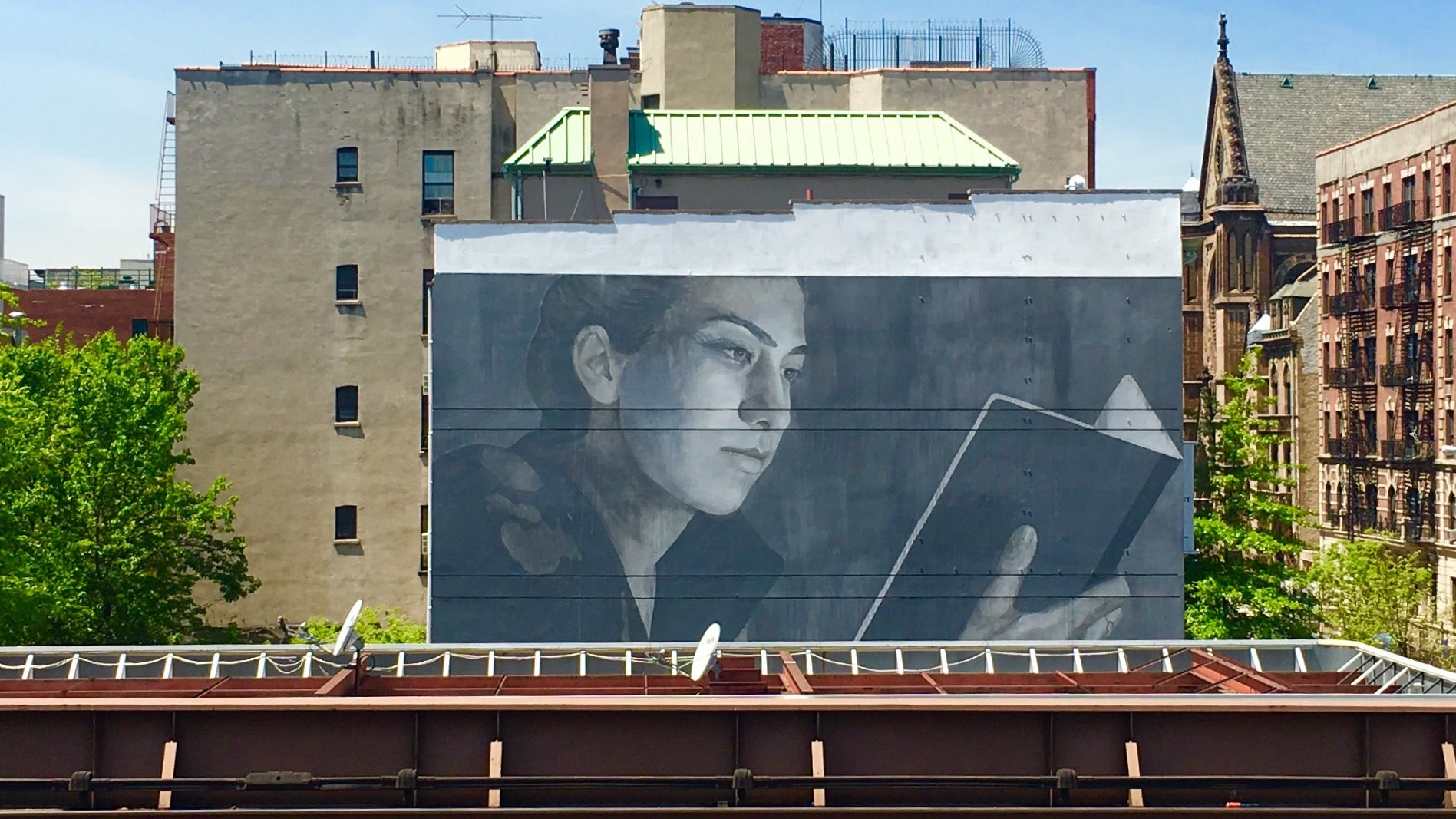
Bahari considers Iran’s treatment of the Baha’i community a barometer of the government’s tolerance of minorities in general. “If the Iranian government can develop a more logical, more reasonable approach to the situation of the Baha’i, that is a sign of a less dogmatic and less extremist government,” said Bahari. “And that is not what many conservative hardliners want. So Baha’is become victims of the infighting within the country.”
In May of this year, Faezeh Hashemi, the daughter of a powerful ayatollah, had tea with Fariba Kamalabadi, a prominent leader of the Baha’i community, sparking a debate in Iran.

On Sept. 6, Bani Dugal, the principal representative of the Baha’i International Community, wrote a letter (pdf) to Iranian president Hassan Rouhani, lamenting the “the unrelenting economic oppression imposed upon the Baha’i community” and urging the government to take action. “How can the deliberate policy of a government be to impoverish a section of its own society?” he wrote.
The Iranian government has asked similarly pointed questions about the United States, mainly in the context anti-American propaganda accusing white capitalists of exploiting their black countrymen.
“Since the beginning of the Iranian Revolution the Iranian government has pretended to be the champion of the oppressed throughout the world, including African Americans,” said Bahari. “It seems that the Iranian government does not see the similarities between its own actions against a large minority in its own country and what went on in the US against the African-American minority.”